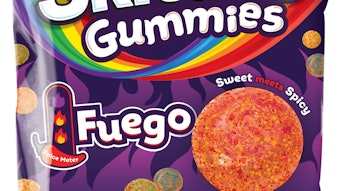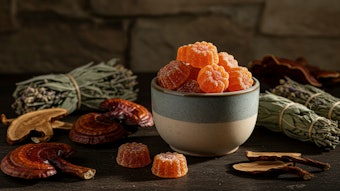
As seen with Dubai chocolate, and most recently angel hair chocolate, viral social media trends are increasingly impacting flavor innovation.
But these trends present a challenge for food and beverage products more Pierre Battu, managing director, Asia, OSF FlavorsCourtesy of OSF Flavors
Pierre Battu, managing director, Asia, OSF FlavorsCourtesy of OSF Flavors
OSF Flavors recently undertook developing an angel hair chocolate flavor that can be applied to a broad array of food and beverage categories beyond chocolate.
Here’s what we learned.
Listening programs for early detection of trends are key.
We first began to notice the angel hair chocolate trend from social media listening programs we had established. Our teams are based on four continents, allowing us to monitor emerging trends in real time from different cultural perspectives. This perspective is critical as it enables quick evaluation of the global relevance of a trend once it is spotted—whether through social media chatter, local influencers, or in conversations with clients, experts or media— and to assess its potential to resonate across markets.
Once a trend is spotted, acquire all associated available products in a variety of forms and assemble a tasting panel – in our case our in-house flavorists - to determine the products’ organoleptic profile.
From there, move into flavor development. Based on our library, we created a first flavor featuring all identified notes from the profile of angel hair chocolate. Once formulated, our flavorists’ panel tasted again to make sure that the formulation developed was in line with the tasting of the final product. Adjustments were then made until reaching the perfect balance.
Getting the flavor right so that it is evocative and representative of the original product driving the trend is, of course, critical, but brands will also need to build a full sensory experience by bridging flavor with texture and creative packaging to truly convert the experience consumers enjoy in these videos.
For example, the soft pastel color palette (white, pink) of angel hair chocolate and seasonal associations of the trend offer a rich canvas for marketers to create limited editions or themed launches that drive excitement without diluting core offerings.
But the key is to act quickly.
While traditional approaches relied on purchasing expensive marketing data and trend reports, the landscape is shifting thanks to artificial intelligence (AI). The real advantage now lies in the ability to react quickly and translate insights into products fast. With AI and digital agents democratizing access to information, the difference between companies is less about who can buy the most data, and more about who can react, adapt, and implement at speed.
Our ad hoc project teams (bringing together marketing, R&D, and sensory experts) made it possible for us to move rapidly from identification to concept development and testing, shortening the innovation cycle and increasing the odds of successful launches.
Finally, creating a trend-inspired flavor is about blending creativity with scientific expertise—understanding what makes a trend appealing, and how to translate that into a flavor experience that feels authentic and exciting.
Angel hair chocolate is a clear example of how social media virality is reshaping flavor innovation. Visually engaging formats like Angel hair chocolate are no longer just dessert novelties—they're opportunities for brand storytelling and product diversification. But the rate at which these viral trends are emerging is rapidly increasing. So stay on top of trends as they develop and be prepared to move quickly to translate social media popularity into full flavor experiences – before the next trend emerges.










